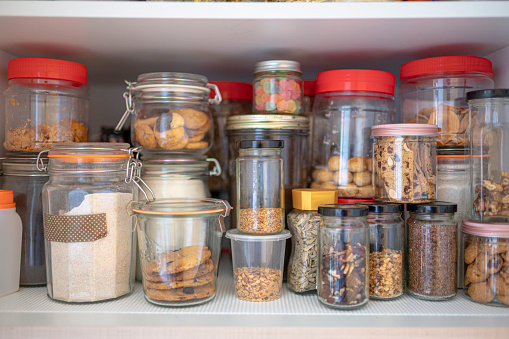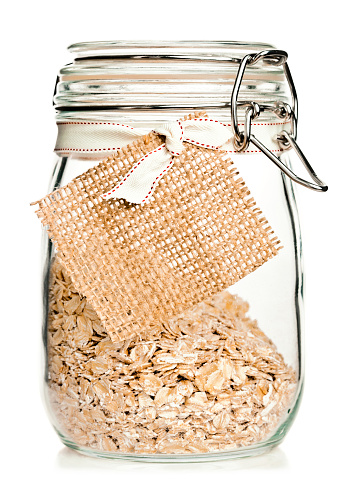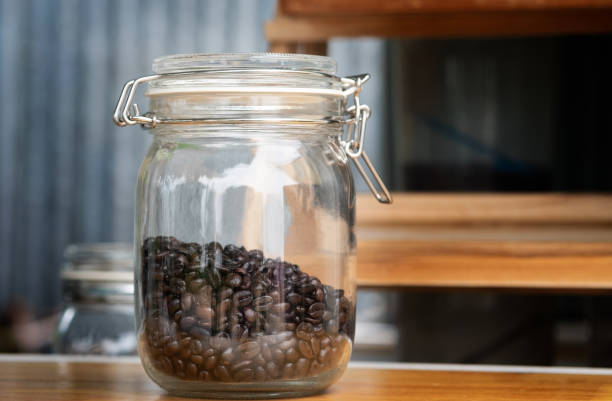Handy it may be to have a huge stock of dry food on hand, not everyone is endowed with an infinite amount of storage space. Therefore, we provide both 4-inch and 7-inch storage containers (small and larger respectively). These receptacles may hold either 8 ounces or 1 pound of coffee, and they come in a variety of various materials, including stainless steel.

Should a coffee canister be used to store coffee?
Yes, in a nutshell, is the answer. If you want your coffee to retain its flavour after being kept for a long period of time, you should get a high-quality coffee canister. The shelf life of opened roasted whole bean coffee is around one month, however the shelf life of opened ground coffee is just a few of days. The freezer food containers malaysia is essential now.
Attempting to brew coffee with stale beans is severely discouraged
When the original packaging holding the coffee beans is split open, the oxidation process begins. As a result of oxidation, the coffee bean loses a substantial amount of flavor and quality. The oils on the surface of the coffee bean are primarily responsible for the coffee’s notably rich and robust flavor profile. Upon exposure to air, these oils begin to degrade and lose their flavor.
A remedy to this problem is to use canisters made expressly for storing coffee, which allow the beans to produce carbon dioxide while blocking the entry of any outside oxygen into the container. After roasting, coffee beans release carbon dioxide, making it difficult to keep them fresh for a long amount of time.. There are a number of coffee storage companies that sell their beans in bags with a one-way valve. Using this valve, coffee beans may release their carbon dioxide while preventing any outside air from getting into the system. Coffee canisters are similar to mugs, except that they may be repurposed.

- One-way valve bags do nothing to keep coffee beans fresh once they’ve been opened, despite the fact that they’re excellent for carrying the product. As a result, you may extend the shelf life of your coffee beans by transferring them into a coffee storage canister.
- Reusing coffee canisters means you can make coffee every day without worrying about ruining the quality of the beans you don’t use. An outstanding instance of how coffee canisters keep food fresh for longer periods of time is the lid-sealing technology used in storage containers.
- Air trapped within the containers is allowed to leave, but outside air is kept out, so that food that has been stored is not contaminated in any way. For the at-home barista who likes brewing coffee at home, these tools are a must-have.
Be sure to keep up with both your hygiene and your well-being
Our health may be protected by a food container that is airtight and contains only the best components.
The Food and Health Administration highly advises using sealed food storage containers. Chemical, biological, and physical intrusions are all avoided because to the container’s superior construction.

Reduces the possibility of cross-contamination
Contamination and pollution of food must be prevented at all costs. A foreign object cannot enter the food if it is stored in a container that does not allow air to get into the food. As a result, there is no chance of contamination.
Food storage containers can be handy for a variety of reasons
It’s common for us to utilise disposable meal trays with lids and other food containers whether we’re out for a picnic or on a road trip or camping.
Furthermore, the meal may be consumed immediately from the container without any problem or difficulties all.
Make Foods More Exotic and Delectable
Another benefit of storing food in airtight containers is that they preserve freshness. Containers for storing food that are designed to enhance the flavor of the food they contain. The discovery that food tastes better and lasts longer when stored in glass containers has led to the widespread use of these containers in supermarkets and milk cartons alike. The glazed surface of most glass food storage containers aids in the elimination of food odors and the preservation of any remaining flavors.